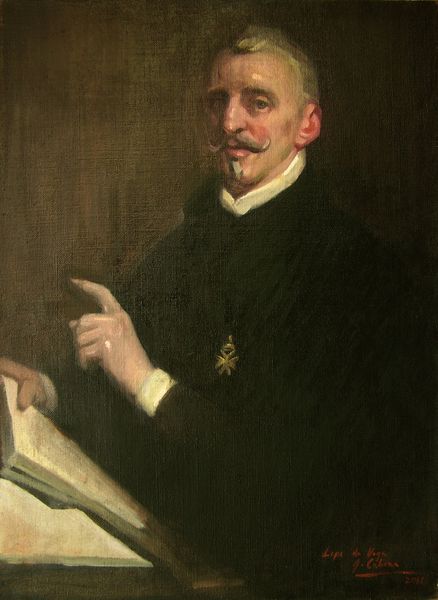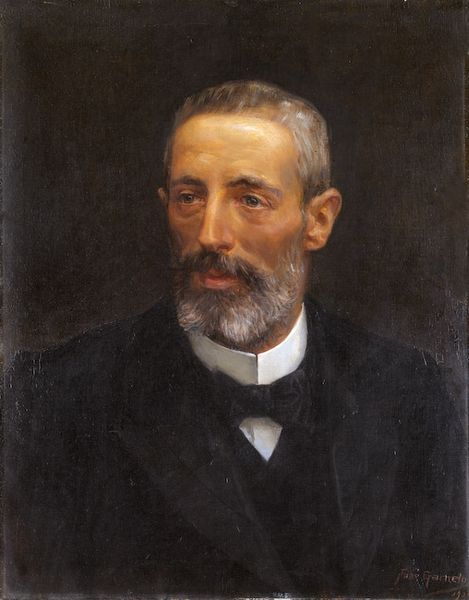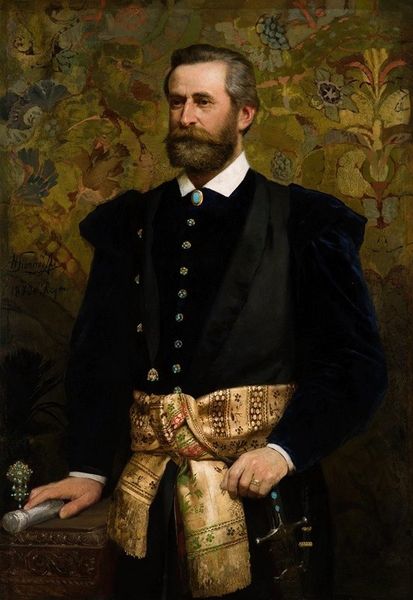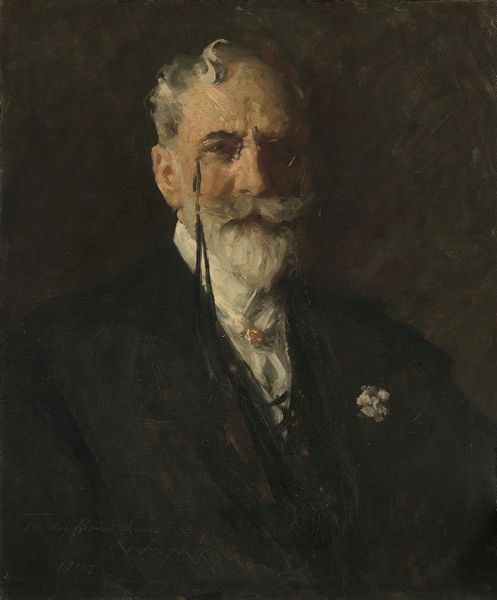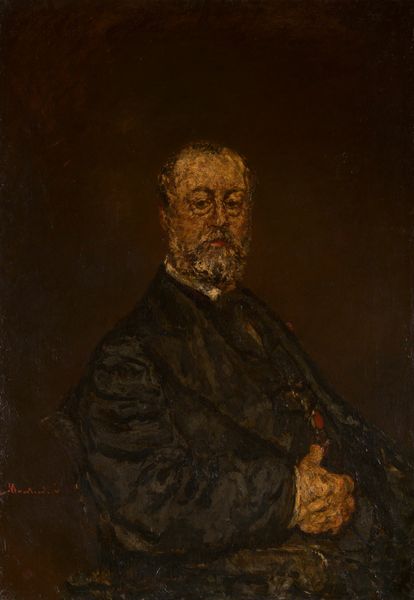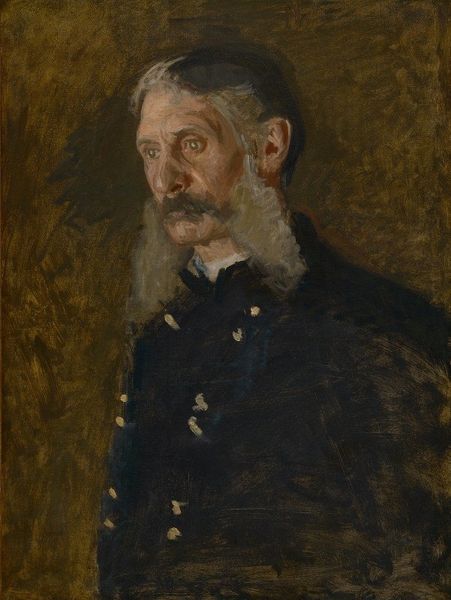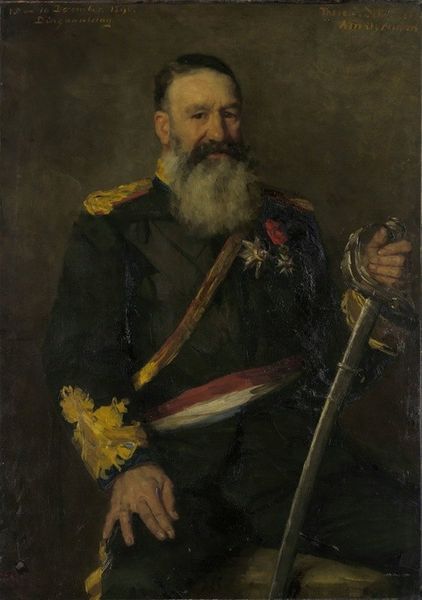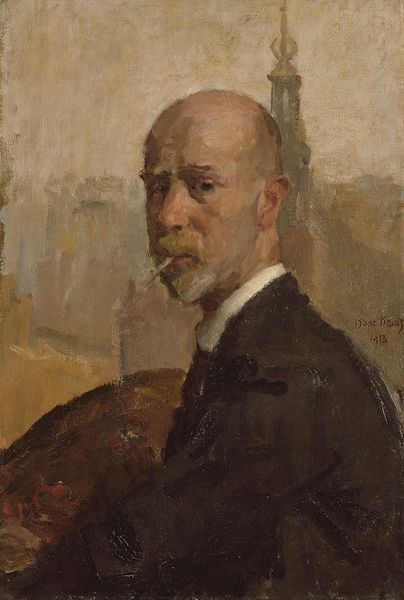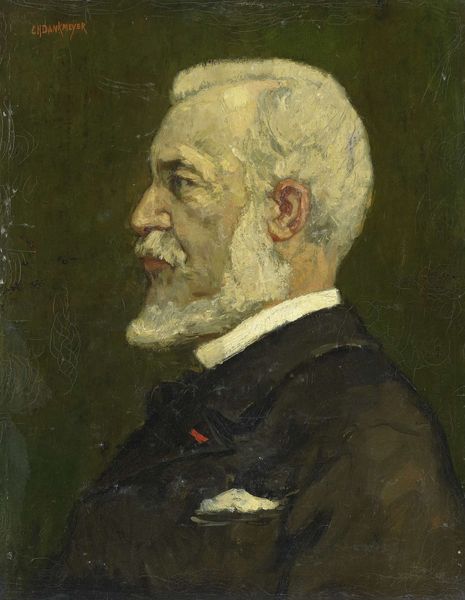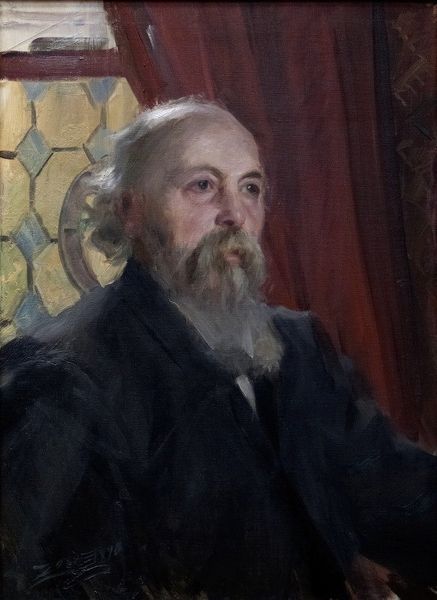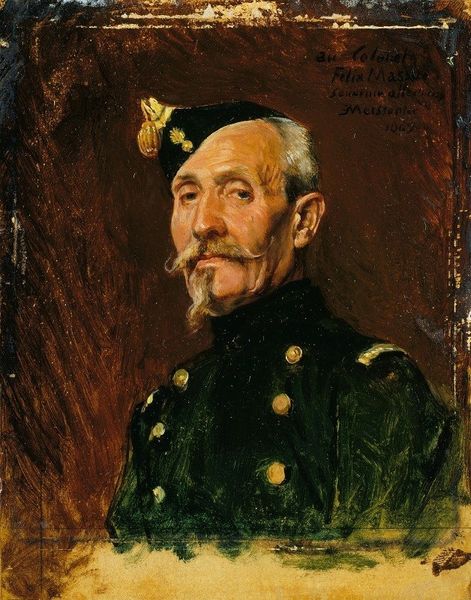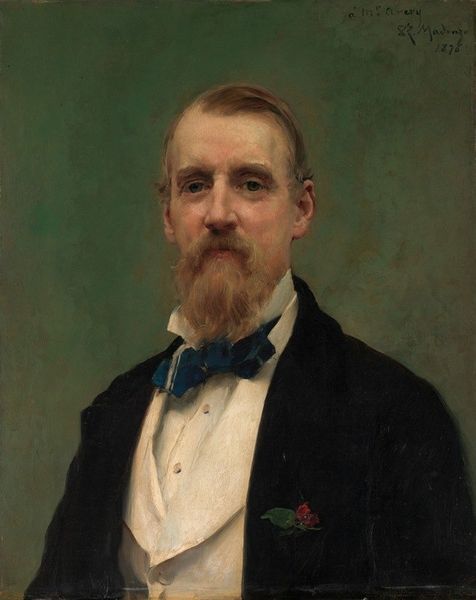
Copyright: Public Domain: Artvee
Curator: Here we have Jacek Malczewski's 1911 "Portrait of Count Antoni Wodzicki," rendered in oil paint. What strikes you first? Editor: Immediately, it’s the layering – that tangible sense of weight and history in the figure’s attire and in the texture of his aged skin. You sense both vulnerability and authority emanating from him. Curator: Yes, the textures are critical to the image’s symbolic language. Notice the details in the face. There’s a semiotic tension between his piercing eyes and the almost dreamlike, faded background. Consider also, the golden chain and the buttons on his robe, symbols of nobility which contrast with the darker tones of the overall palette. Editor: And think of the crafting of that gold. How it's made – what labor extracted for this man’s portrait. Look closely: the landscape melts behind him like memory itself, while that ornamental chain looks to be the product of immense metalwork, cold, functional wealth against human aging and remembrance. Curator: Precisely. The background narrative serves as a form of spectral allegory. That spectral gathering behind the figure seems almost romantic—an element reminiscent of Delacroix in color usage—counterposed with the Realist rendering of Wodzicki himself. Malczewski has cleverly inserted both Romanticism and realism. Editor: While I'm not convinced that Malczewski sought that precise balance, I agree that that background seems crucial to grounding the social commentary that I initially perceived, reminding me of the artist’s other symbolic pieces with echoes of Romanticism. Curator: Indeed, and the painting acts almost as a symbolist poem. Editor: A fitting summation – highlighting that tension between subject, technique, material reality, and historical moment – a collision of all of those elements onto canvas.
Comments
No comments
Be the first to comment and join the conversation on the ultimate creative platform.
